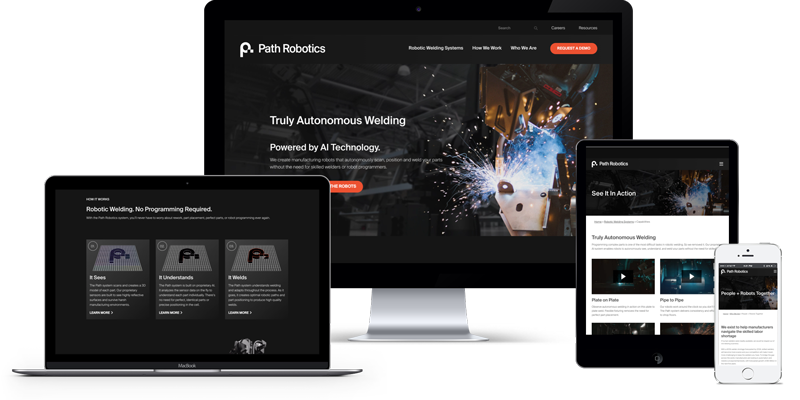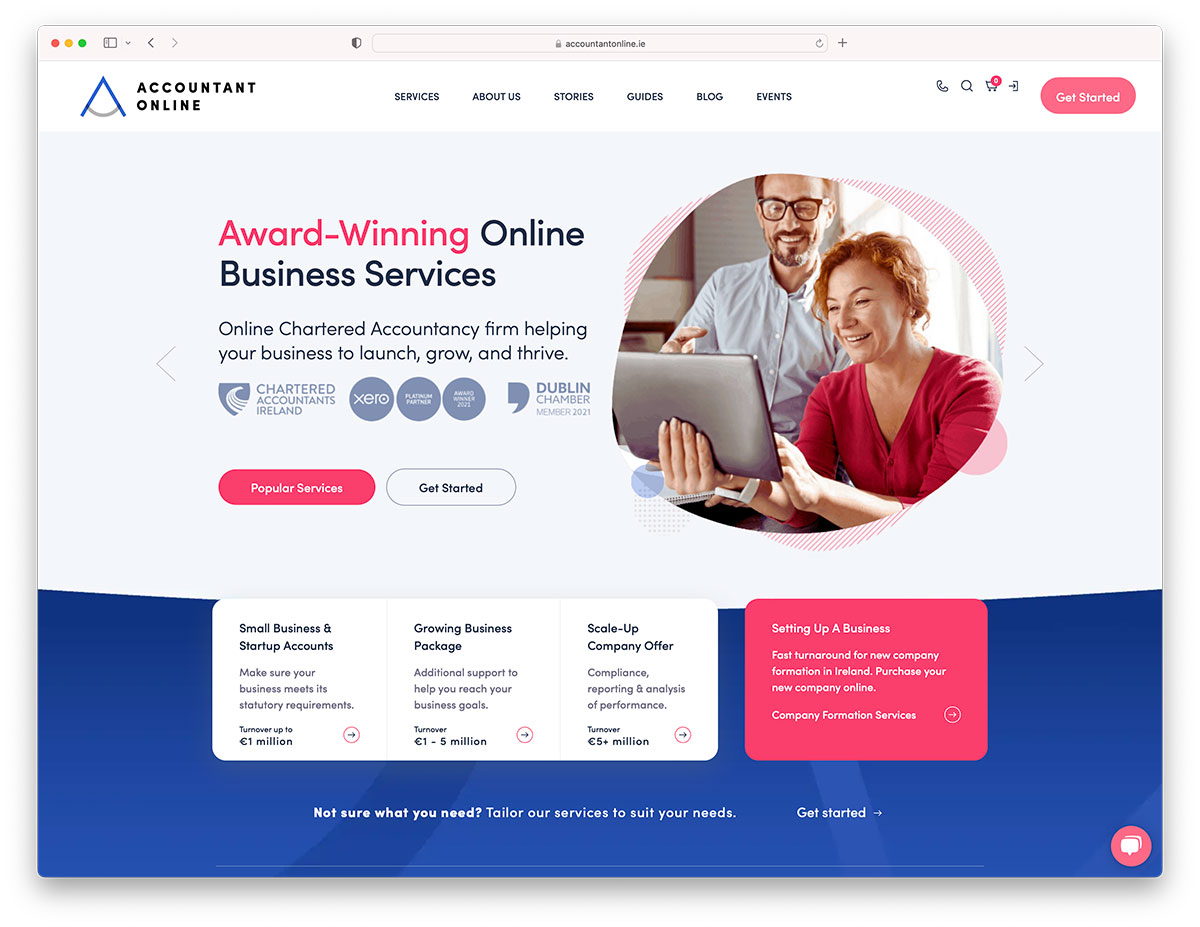
Crafting a User-Friendly Experience: Crucial Components of Efficient Website Layout
In the realm of website design, the significance of crafting a straightforward experience can not be overemphasized. Crucial elements such as a clear navigating framework, responsive style concepts, and fast loading times function as the structure for engaging users properly. An user-friendly individual interface paired with accessible content guidelines ensures that all individuals, regardless of ability, can browse with ease. Yet, regardless of these essential principles, many web sites still fail in supplying this smooth experience. Comprehending the hidden elements that contribute to reliable style can shed light on just how to improve individual complete satisfaction and involvement.
Clear Navigation Framework
A clear navigation structure is basic to reliable web site layout, as it directly affects individual experience and engagement. Customers ought to have the ability to find details effortlessly, as user-friendly navigation lowers frustration and motivates exploration. An efficient format permits visitors to comprehend the relationship in between different web pages and content, causing longer site visits and boosted communication.
To achieve quality, developers ought to employ familiar patterns, such as top or side navigating bars, dropdown menus, and breadcrumb tracks. These elements not only boost usability however also give a sense of positioning within the website. Keeping a regular navigation structure throughout all pages is vital; this experience helps users prepare for where to find wanted details.
Furthermore, incorporating search performance can further aid users in locating details material quickly. In recap, a clear navigating structure is not just a design selection; it is a critical aspect that dramatically influences the overall success of a website by cultivating a satisfying and efficient individual experience.
Responsive Design Principles
Reliable internet site navigating establishes the stage for a seamless customer experience, which ends up being a lot more critical in the context of responsive layout concepts. Receptive layout guarantees that internet sites adjust fluidly to numerous screen sizes and alignments, boosting access across gadgets. This versatility is attained through flexible grid designs, scalable photos, and media queries that allow CSS to adjust designs based on the gadget's features.
Trick principles of responsive style include fluid formats that use percentages as opposed to fixed units, guaranteeing that components resize proportionately. Additionally, employing breakpoints in CSS makes it possible for the style to shift smoothly between various device sizes, optimizing the format for each screen kind. Making use of receptive photos is likewise essential; photos ought to instantly adapt to fit the display without losing quality or creating design changes.
Additionally, touch-friendly interfaces are crucial for mobile individuals, with properly sized switches and intuitive gestures boosting customer interaction. By integrating these concepts, developers can produce web sites that not only look aesthetically pleasing but additionally give engaging and practical experiences across all gadgets. Eventually, efficient responsive style fosters user satisfaction, lowers bounce rates, and urges longer involvement with the material.
Quick Loading Times
While users increasingly anticipate websites to load swiftly, fast filling times are not just an issue of benefit; they are vital for preserving site visitors and improving total individual experience. Research study shows that users typically desert sites that take longer than 3 seconds to lots. This desertion can bring about raised bounce prices and lowered conversions, ultimately damaging a brand's online over here reputation and income.
Rapid packing times improve customer involvement and contentment, as visitors are most likely to discover a website that responds swiftly to their communications. Additionally, search engines like Google prioritize rate in their ranking algorithms, suggesting that a slow internet site may struggle to accomplish exposure in search engine result.

Intuitive Interface
Rapid filling times lay the foundation for an engaging online experience, however they are just part of the formula. An user-friendly interface (UI) is important to ensure visitors can navigate a web site easily. A well-designed UI enables individuals to accomplish their purposes with minimal cognitive load, helpful site fostering a seamless communication with the website.
Crucial element of an intuitive UI include constant design, clear navigation, and identifiable symbols. Uniformity in style components-- such as color schemes, typography, and switch styles-- aids customers recognize just how to engage with the website. Clear navigation frameworks, consisting of sensible food selections and breadcrumb routes, make it possible for customers to locate info promptly, reducing stress and improving retention.
Furthermore, responses devices, such as hover results and packing signs, notify individuals about their actions and the internet site's response. This openness cultivates trust and motivates continued involvement. Prioritizing mobile responsiveness ensures that customers delight in a cohesive experience across devices, providing to the varied methods audiences accessibility content.
Available Web Content Standards

First, utilize straightforward and clear language, avoiding lingo that may perplex readers. Highlight proper heading frameworks, which not just aid in navigating but likewise help screen visitors in analyzing content hierarchies properly. In addition, offer alternative text for pictures to convey their meaning to individuals that depend on assistive technologies.
Comparison is an additional important element; guarantee that message sticks out against the history to improve readability. Moreover, make certain that video and audio web content includes captions and transcripts, making multimedia easily accessible to those with hearing disabilities.
Last but not least, incorporate keyboard navigability into your layout, allowing users who can not use a mouse to access all site functions (website design). By adhering to these accessible web content guidelines, internet designers can produce inclusive experiences that satisfy the demands of all individuals, inevitably boosting user interaction and fulfillment
Final Thought
To conclude, the combination of necessary elements such as a clear navigating framework, receptive layout concepts, quick packing times, an instinctive interface, and accessible content guidelines is important for producing an easy to use website experience. These elements collectively improve functionality and interaction, making sure that customers can easily engage and browse with the website. Focusing on these design elements not just improves total complete satisfaction but also cultivates inclusivity, fitting varied customer needs and choices in the electronic landscape.
A clear navigating structure is basic to reliable site design, as it directly affects individual experience and interaction. In summary, a clear navigation structure is not just a layout choice; it is a calculated component that considerably influences the total success of a web site by cultivating a efficient and satisfying customer experience.
Additionally, touch-friendly user interfaces are crucial for mobile individuals, with properly sized buttons and intuitive gestures improving user communication.While customers increasingly expect web sites to load rapidly, quick filling times are not simply a matter of benefit; they are necessary for preserving visitors and enhancing general customer experience. website design.In conclusion, the combination of essential components such as a clear navigating framework, responsive style principles, fast loading times, an user-friendly customer interface, and accessible content standards is important for producing an easy to use site experience